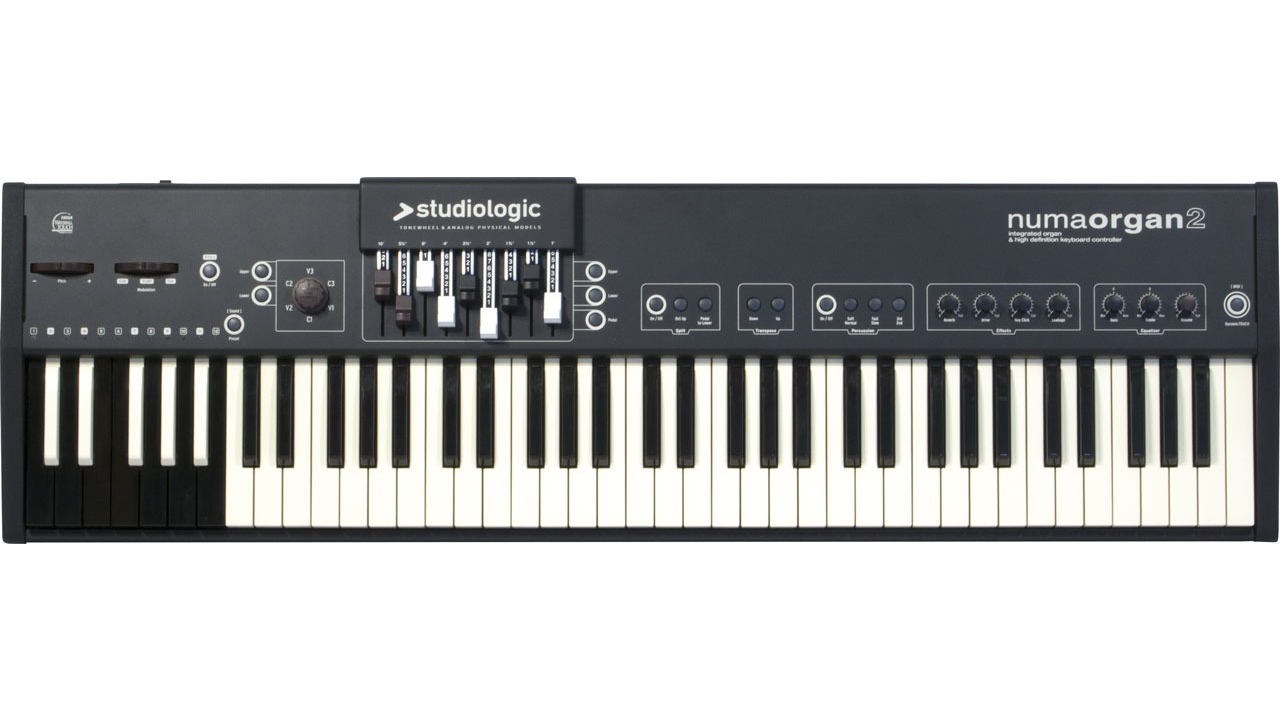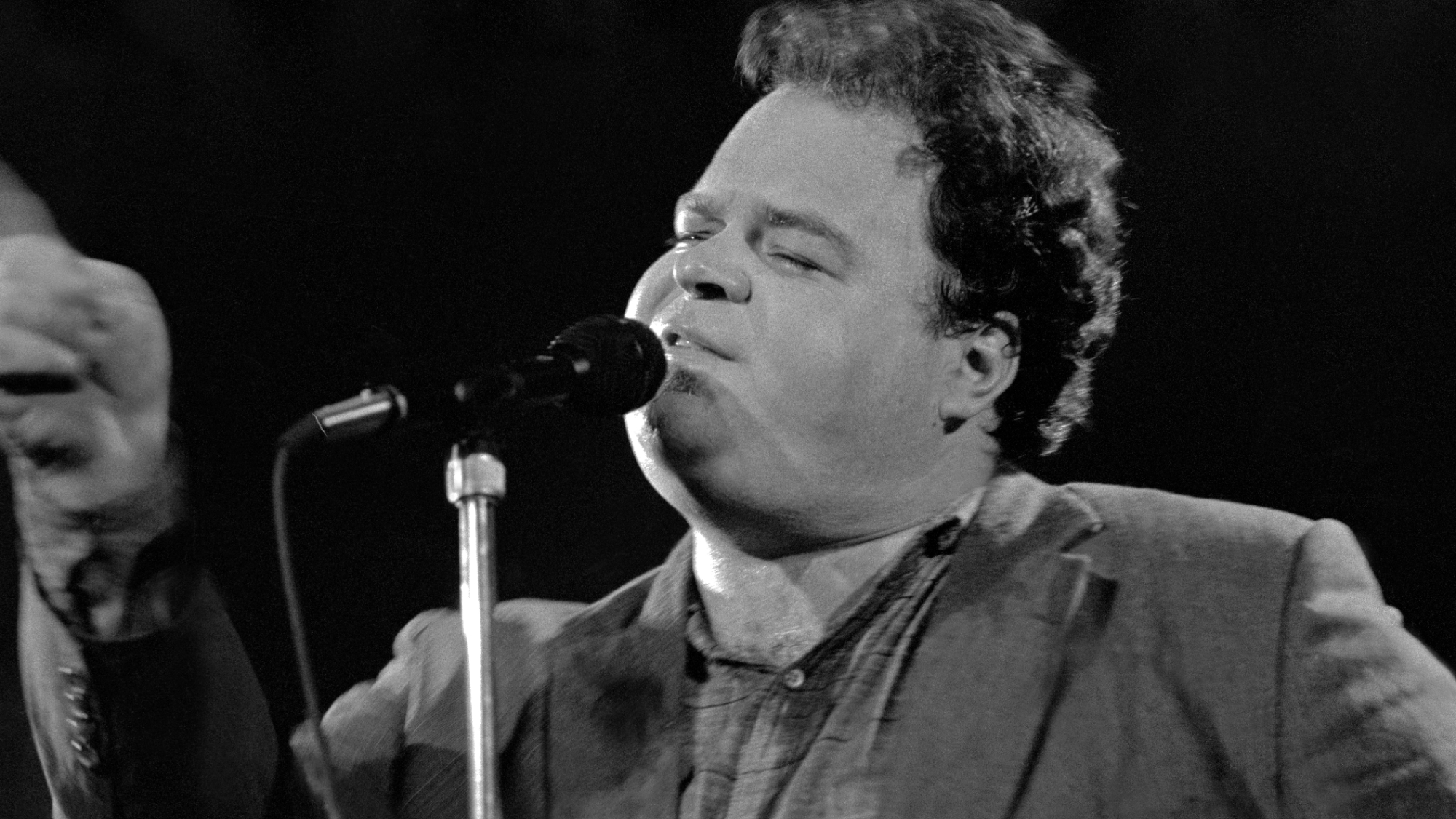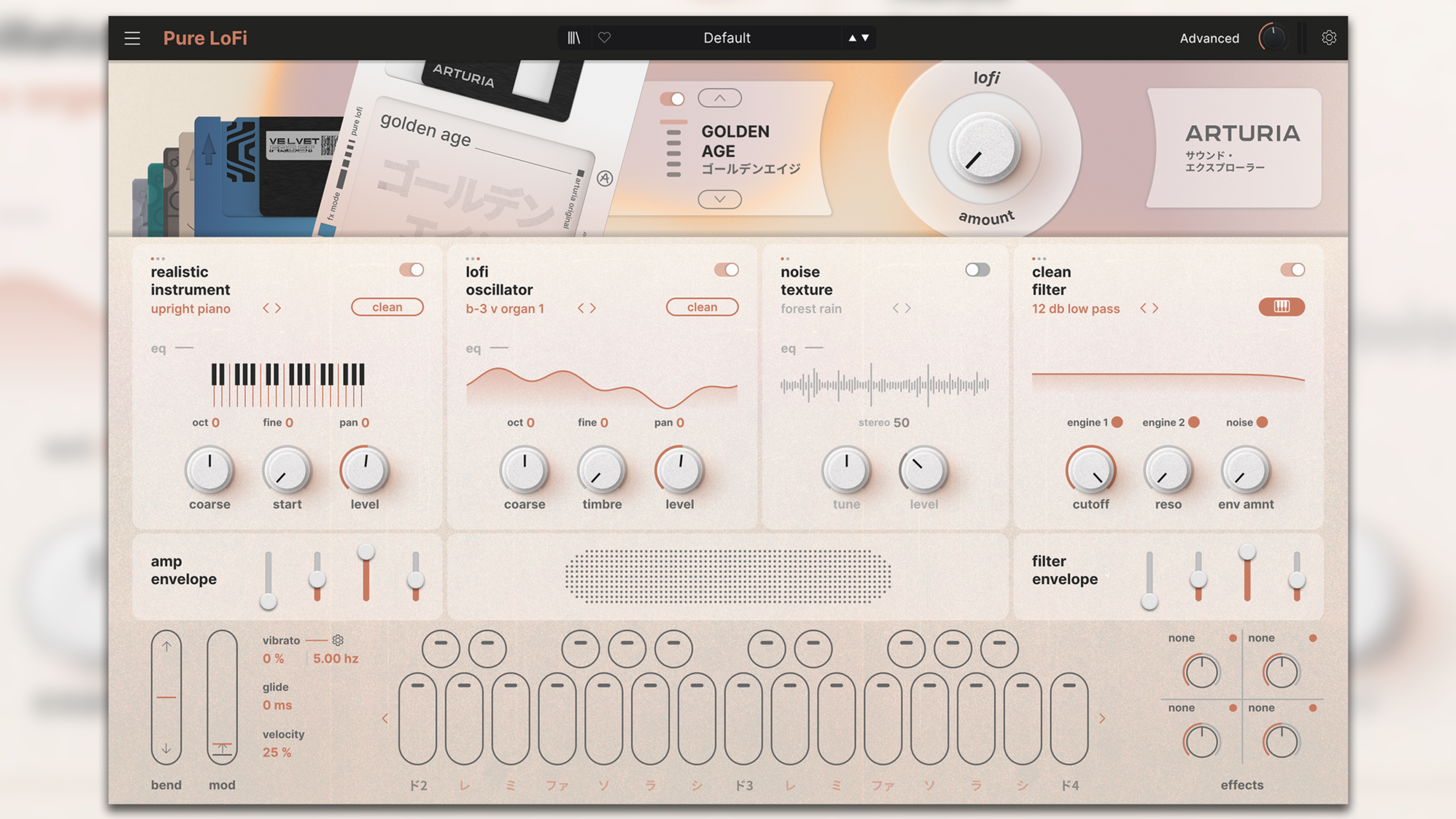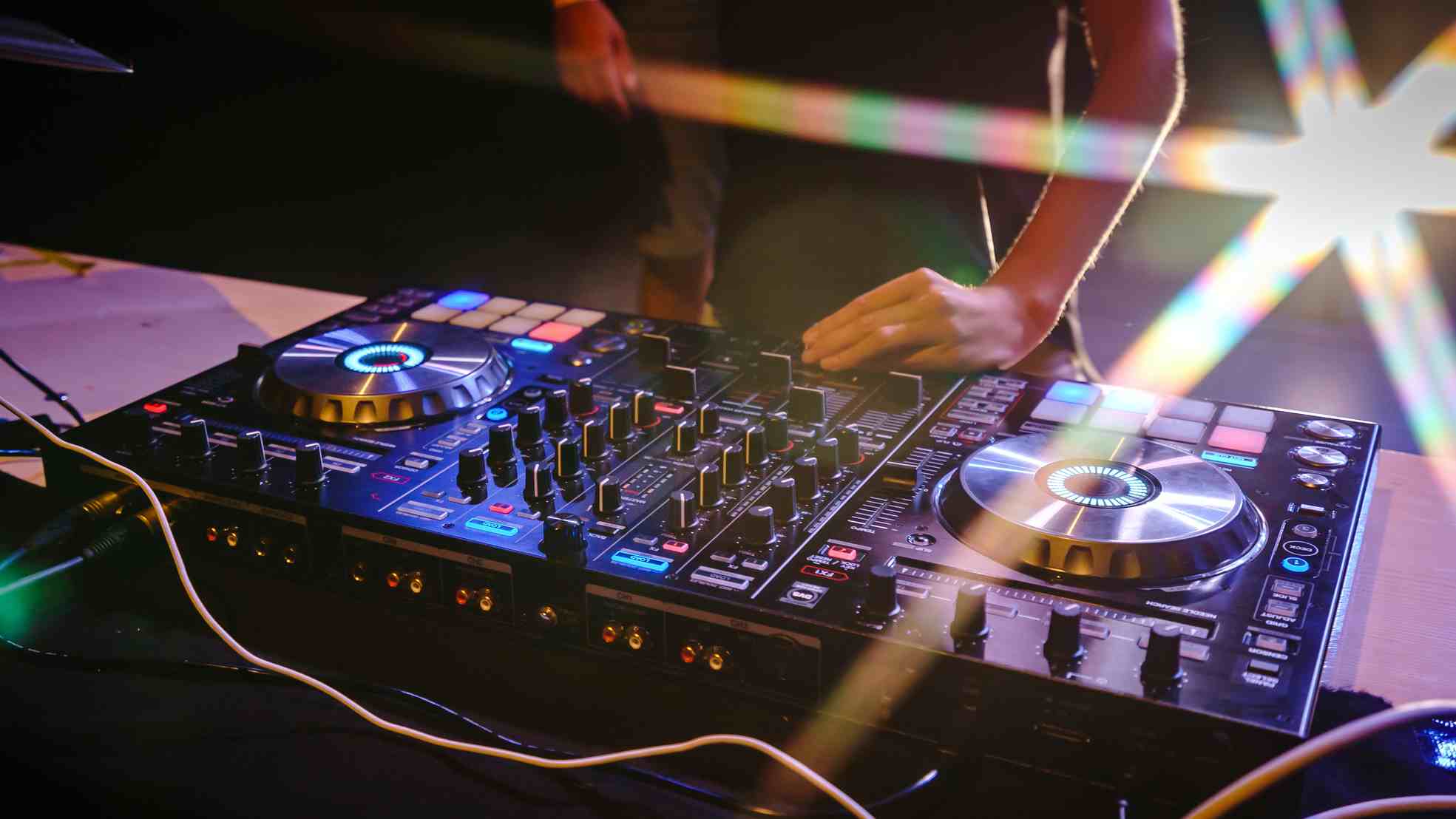Studiologic Numa Organ 2 reviewed
Editor in chief Stephen Fortner reviews Italian outlier Studiologic's latest foray into the single-manual organ clone game: the Numa Organ 2

These days, you could hardly be blamed if the tone of your voice when you say, “Wow, another clonewheel organ!” conveys irony rather than the excitement it may have a few years ago. We’ve come to the point where the options for getting B-3 and Leslie sound we can be proud of into our stage rigs are all very, very good—from dedicated keyboards to emulation modes in various general-purpose synths to the organ in GarageBand for iOS (no joke). Today, Hammond and Nord pretty much own the hardware-slab game, but when relative outlier Studiologic introduced the original Numa Organ (reviewed May ’11), we were impressed by its rich sound, rotary realism, and simple operation. With the big boys having since introduced such instruments as the Hammond SK series and Nord Electro 4D, what compelling story can a Numa sequel offer? Read on . . .
Overview
Like the original Numa Organ, the Numa 2 uses modeling technology exclusively (no samples) and is a “straight” organ with no piano, Rhodes, synth, or other sounds of any kind. Its controls layout appears identical to its predecessor, but in a decidedly more compact package. Where the original’s design language pretty much followed the stock B-3, the Numa 2’s angles evoke professionally chopped road organs. It’s built mostly of metal, with fit and finish that’s tight enough to let you imagine that it was chiseled from a single block of material. I was initially concerned about the durability of the “drawbar garage” that protrudes from the top like the superstructure on a container ship, but on closer inspection, it’s as solid as everything else on the unit.
Also like the original, the Numa Organ 2 offers three multitimbral parts: upper manual, lower manual, and bass pedals, which live on MIDI channels 1, 2, and 3, respectively. You can plug in a controller to serve as the lower manual, but if you want to add a pedalboard at the same time, there’s only one MIDI input around back, so the manual says to use a MIDI merger device. Would it have been that big of a deal to have added a second MIDI input for bass pedals?
Keyboard feel is excellent and fast. I had a first-gen Numa Organ around for comparison, not to mention a Hammond SK1 and XK-3C, plus an old Nord Electro 2. The Numa 2’s action was quieter than all of them (though the XK-3C was closest) as well as the most comfortable for performing palm smears. We’re talking subtle differences here, but you can feel it. The keys sense velocity for any externally-sourced sounds you wish to control, and the “Dynamic Touch” button is surprisingly useful: Three modes—off, on, or blinking—respectively correspond to MIDI control of internal sounds only, external sounds only, or both.
Having knobs as opposed to menu items for overdrive, reverb, key click, and an approximation of tonewheel leakage is quite nice—it reminds me of the early-’80s Korg CX-3. The downside of the Numa’s simplicity, however, is that other than choosing different organ models (see below), there’s really nothing to edit. You can’t tweak what the slow and fast rotary speeds are, nor virtual mic distance, nor stereo spread, nor individual tonewheel properties as on today’s Hammond portables, nor . . . well, you get the idea. This is far from a deal-breaker, as the Numa 2 sounds incredibly sweet as is, but be aware that it lacks the tools for deep vintage buffs with specific sounds in their heads to perform sonic archaeology.
Sounds
Get the MusicRadar Newsletter
Want all the hottest music and gear news, reviews, deals, features and more, direct to your inbox? Sign up here.
The Numa 2 offers multiple organ models, which you choose from by holding the Sound/Preset button until it blinks, then hitting one of the reverse-color keys. Three tonewheel models cover B-3, A-100, and C-3 organs. At the same drawbar setting you can hear the different frequency responses, which I’d describe as midrange bump, midrange scoop, and relatively flat. This actually has more to do with different vintages and production runs of Hammonds than the model numbers, but hey, no worries, because they all sound fantastic. The Numa 2 is very much like its forbear in its sense of spaciousness, “breath,” and clear definition of drawbar tones even when they’re blended together. The chosen model can be saved as part of a preset (also selected via the reverse-color keys, when the Sound/Preset button is steadily lit), so you can instantly go from Gregg Rolie coarse-ground pepper to Al Green drawn butter and back. However, the preset keys still exhibit a behavior I flagged on the first Numa: Hitting one sometimes silences held notes, seemingly randomly, so the old technique of jockeying them to modulate drawbar registrations as you play is a non-starter.
You also get a church pipe organ (“diapason” in the PDF manual) and three transistor combo organs. The basic tone of these is authentic enough, but every organ model in the machine uses the nine Hammond drawbar frequencies; unlike the corresponding patches in a Hammond SK or Nord, there’s no exact emulation of the drawbar configuration of a Vox or the stop-tabs of a Farfisa. You’ll still be fine getting through all the Doors and Animals covers your audience wants to hear, because it’s always been easier to make even a real Hammond sound like a transistor organ than the other way around: brake or bypass the Leslie, set vibrato to V3, don’t be afraid of the black drawbars, and you’re pretty much there.
Let’s get back to what really matters: the tonewheel and rotary sound. There’s really not a lot to say here, because they’re simply excellent. I once said that the original Numa Organ came off as more “produced”—like your memory of what the B-3 tracks on your favorite tunes sounds like—whereas the Hammond SK and XK instruments sound more brassy and raw, as though you’re in the room with the untamed genuine article. That’s still the case, and it’s not a bad thing. What’s more, I definitely hear improvements in the Numa 2’s overall sonic authenticity. It’s more open and less phasey than the original. The Drive (overdrive) behavior also seems upgraded. On the original, it got buzzy and fizzy if you turned the knob much past 12 o’clock; here, it’s warm and tube-like all the way up, though at the trade-off of not delivering as much outright distortion.
To give the rotary simulation more props, the sense that you’re listening to two rotors spinning in opposite directions (as with a real Leslie) is pronounced but not overdone, and again, I hear subtle but undeniable improvements over the original Numa.
As to polyphony, I encountered no issues, even when hooking up a lower-manual controller and laying into both manuals hard.
Performance Features
Three backlit buttons switch the drawbars between upper, lower, and pedal registrations. The disadvantage of any organ with only one set of drawbars is that adjusting one registration undoes the visual reference (though not the sound) for the others, which Hammond products compensate for with numbers or little bar graphs in an LED display. Though the Numa Organ 2 is display-less, jumping between the parts still becomes second nature fairly quickly.
You can split the keyboard, adjust the split point by holding the Split button down and striking a key, and shift the lower part up an octave, which is very useful for comping in a pleasing range. There’s also a Pedal-to-Lower button, which maps the bass pedal part to the lower half of the split (or a MIDI’ed lower manual). There are a couple of problems with how these features are implemented, though. One is that there doesn’t seem to be a way to have the Octave Up button affect only the lower manual part but not the pedal part; it always applies to both at once. Another is that there’s no way to make the pedal part monophonic, which you’d presumably want (with low-note priority) if you’re using that same zone on the keyboard to cover left-hand chords. On a hunch, I tried long-pressing and double-tapping buttons to see if I could make either of these things happen, but no luck. By contrast, the “Manual Bass” function on Hammond’s XK and SK series organs behaves in the desired manner on both counts. If you’re going to play just the Upper part across the whole keyboard, as many rockers and funk band musicians who seek out single-manual organs are wont to do, none of this is an issue. But since all this is governed by MIDI communication, it’d increase the Numa’s appeal to jazz and Gospel organists if a future firmware update could improve the bass behavior.
Conclusions
The Numa Organ 2 is really all about two things: the sound and the price. The fact is that the sound wants for nothing: Play this keyboard in a band and you’ll be happy. This is also true of the competition from Hammond and Nord, though all three makes have different characters that it’s interesting to debate. Which brings us to the price. If you can put up with the quirks as I’ve described them, and you don’t need your organ to offer other sorts of gig-ready patches, all that sound costs less than any single-manual organ the competition makes. That’s the real story here.
PROS
Warm, authentic, detailed tonewheel sound. Spacious and absolutely convincing rotary speaker simulation. Three different tonewheel models offer timbral variety. Pipe and transistor combo organs sound good and are a nice bonus. One-control-per-function panel makes for very easy operation.
CONS
Octave-up function for lower-manual part affects bass pedal part simultaneously. No way to make bass monophonic for use in same key range as left-hand chords. Some organists won’t like the perfectly smooth-moving drawbars.
Bottom Line
Great tonewheel and rotary simulation just hit a new level of affordability.
$1,699 list | $1,299 street | studiologic-music.com









